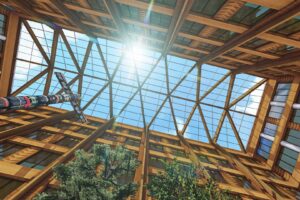Two kilometres of railway track won’t take you very far unless it’s at the CentrePort Canada Rail Park, in which case it can springboard you to the world.
Chris Reiter, senior development manager of Victoria-based Focus Equities, which owns the industrial rail park located adjacent to the Richardson International Airport,says work will begin on the Phase One 2.2-km stretch of track this summer. When the $20-million Phase One rail line installation project is done, with financial support from the National Trade Corridors Fund, rail cars will be able to move on transfer tracks and connect to mainline rail and other modes of transportation with international destinations.
“It makes the rail park a rail park. Otherwise, it would just be an industrial park,” he says.
Reiter hopes as the rail park evolves and starts to reach its potential, that Manitobans will realize how crucial it’s going to be for the province’s economic future.
“It’s going to be very central,” he says. “With the province and the federal government wanting to activate Churchill (as a more active port), Winnipeg will be the hub of all the products going both ways and the rail park will be one of the main industrial providers, amalgamating products from east to west and north to south,” he says. The first phase of the rail park is about 70 per cent sold. The most recent land purchaser is Bulldog Truck Centre, which is the Mack Truck dealer for Manitoba and Northwestern Ontario, who recently purchased a 10-acre land parcel within the 200-acre Phase One development. Mack Trucks earned its trademark nickname, “The Bulldog,” during the First World War when the British government purchased the Mack AC model to supply its front lines with troops, food and equipment. In honour of that history, the Bulldog Truck Centre will be built adjacent to the newly-constructed Bulldog Way. The rail park’s second phase will be about 100 acres, with one 40-acre land purchaser already confirmed. When everything is said and done, likely in about 10 years, the 665-acre site will have about $1 billion worth of infrastructure, including four million square feet of buildings, plus water, roads and sewage.









